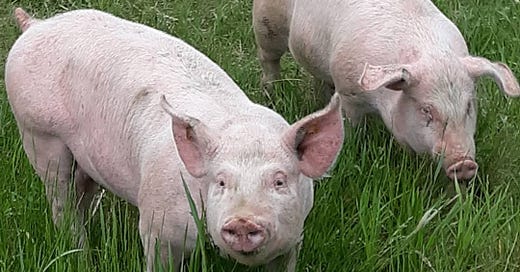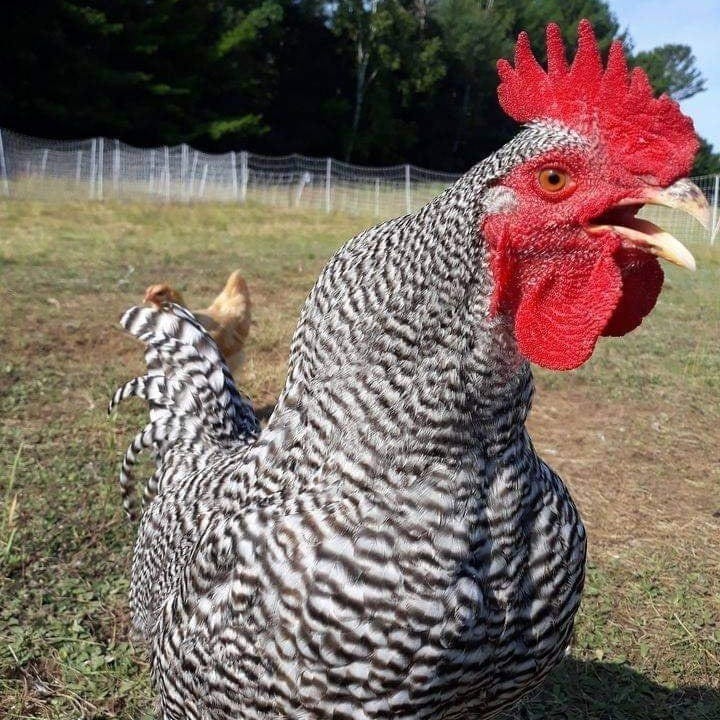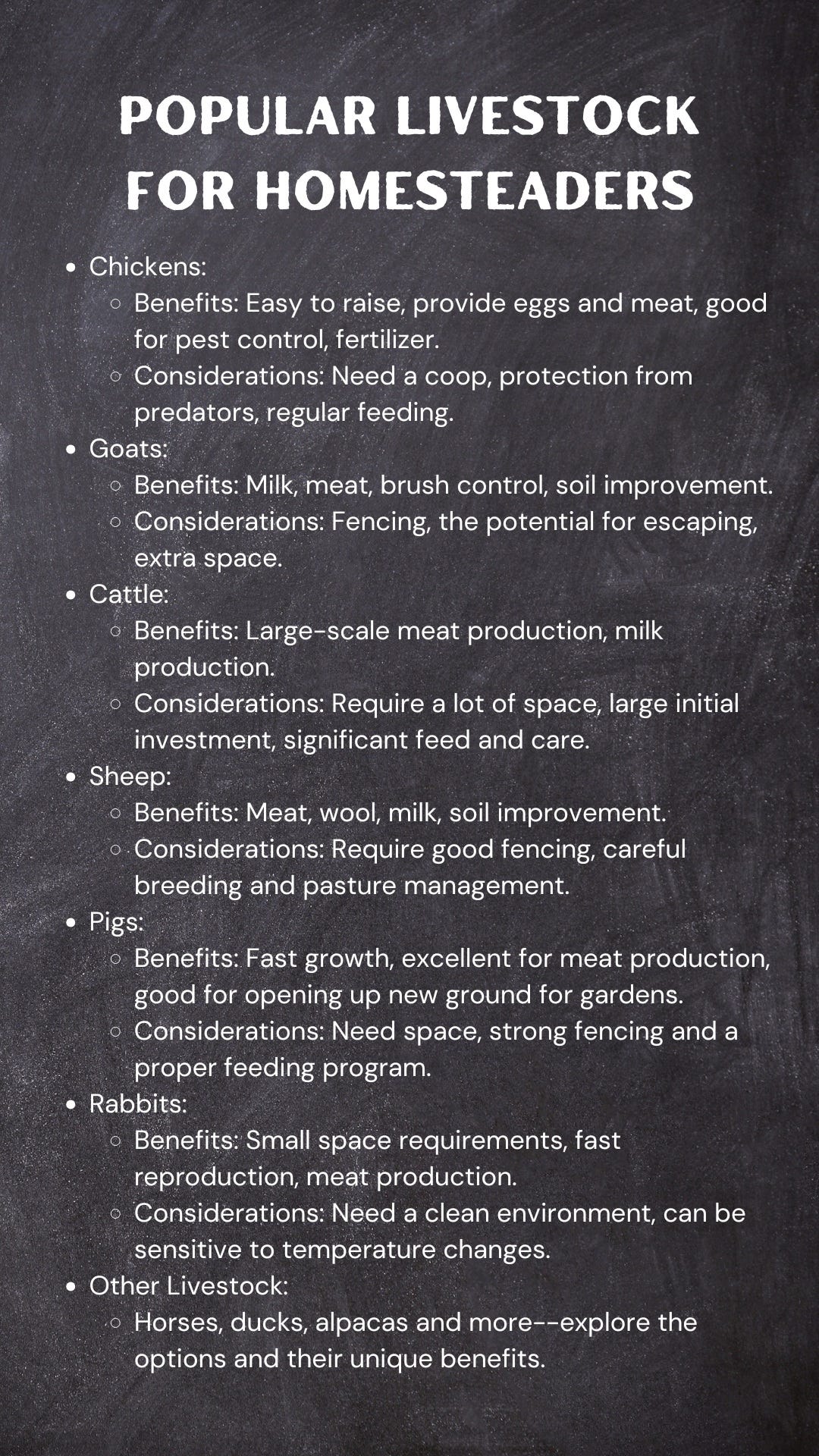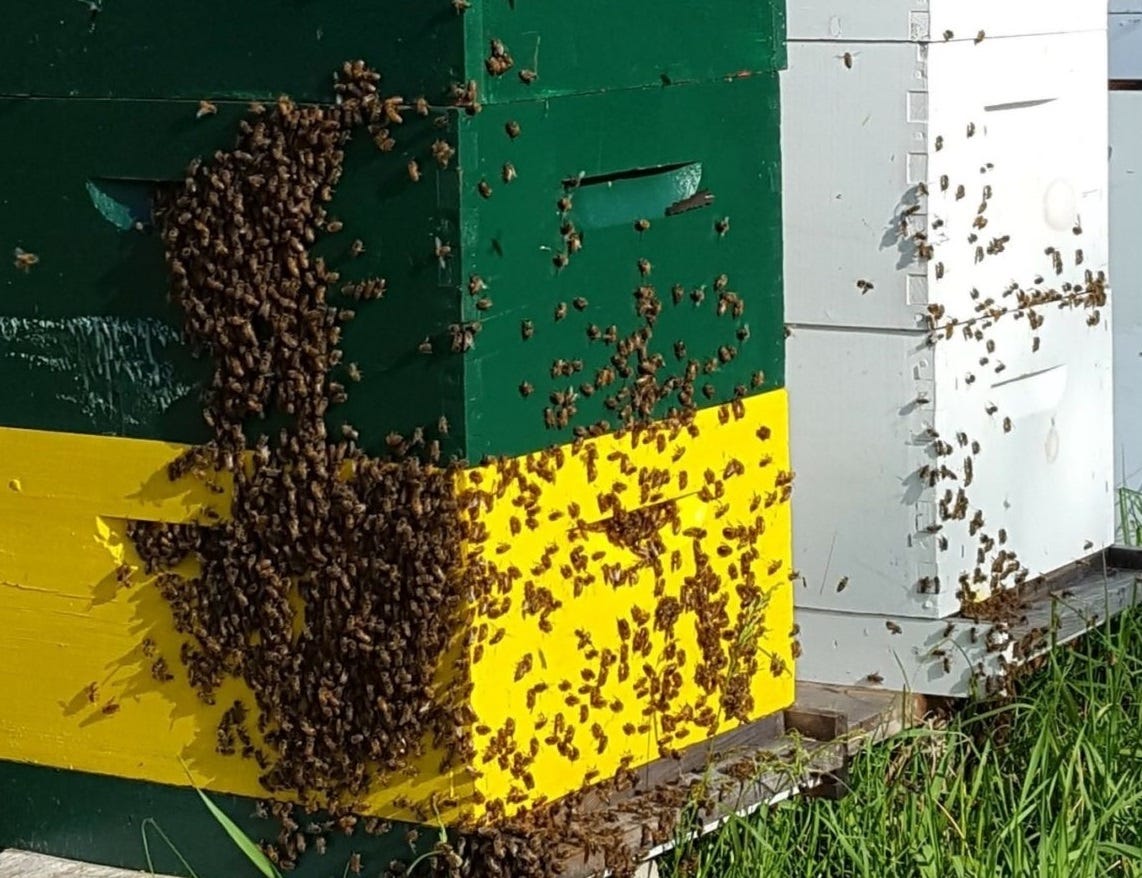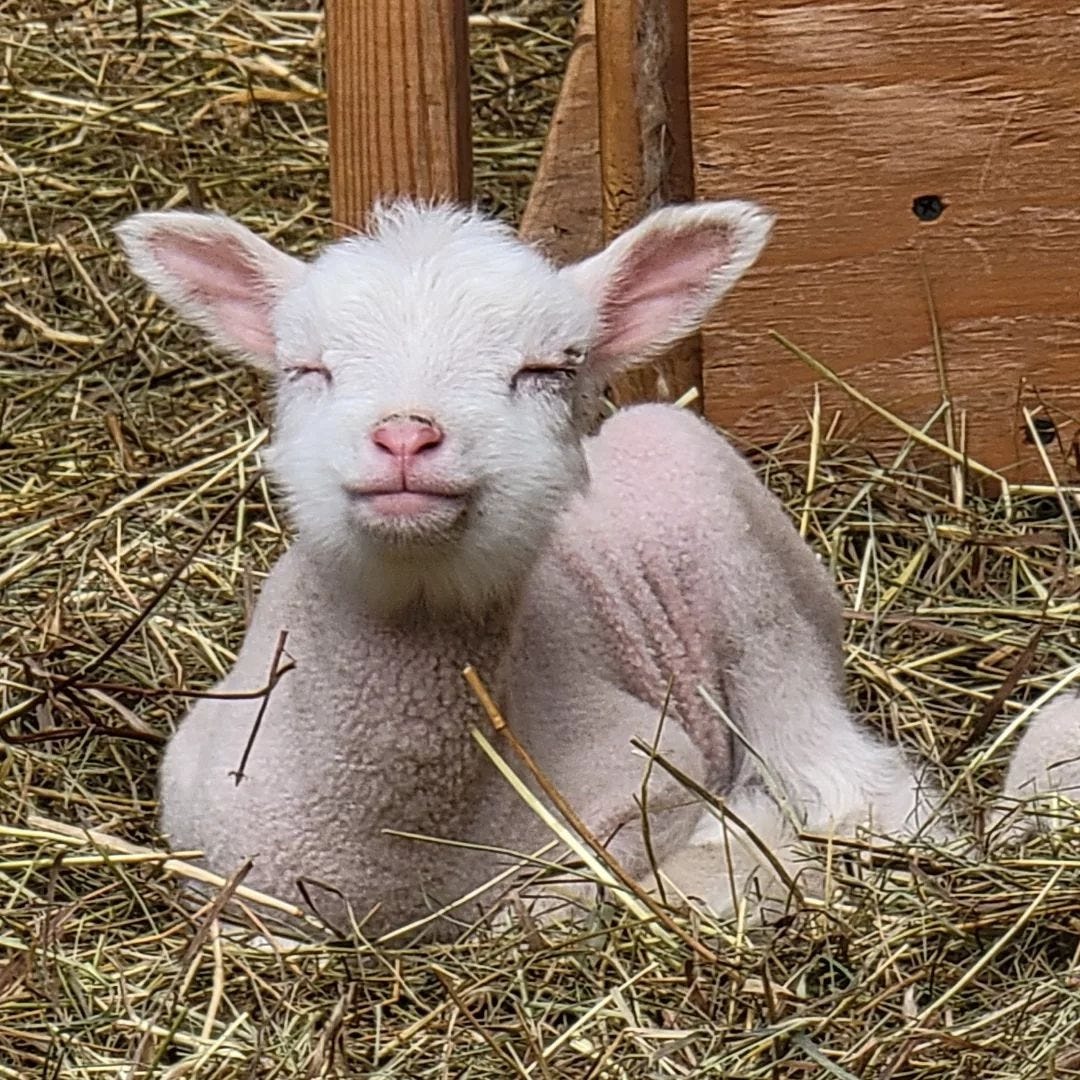The New Homesteaders' Guide to Bringing Home Your First Livestock
Take the time to educate yourself and prepare your homestead to welcome new members to your family...
If you have the space, you’ll likely be thinking about livestock right about now.
For many homesteaders, raising livestock for food production, sustainability and income is the ultimate ideal. end goal. Yet, choosing the right livestock can be overwhelming for newbies.
Bringing animals to your homestead is a big decision and should not be made lightly. Keeping livestock not only impacts the land, but also your family and lifestyle. That’s why it’s especially important to make informed decisions to ensure the health and well-being of your animals—as well as safeguarding your investment of time and money. This guide will help you prepare to welcome new members to your homestead family.
Welcome to the “The Homesteaders’ Handbook”! If you’re new here, I invite you to check out the Course Entry-Portal to learn what this is. Or view my About Page to find out who I am and why I am doing this. Or just dive right in! At “Runamuk Acres” you’ll find the recantings of one lady-farmer and tree-hugging activist from the western mountains of Maine. #foodieswanted
In This Post:
*****Never Impulse Buy Livestock*****
Popular Livestock for Homesteaders
1. Pros and Cons
2. Do Your Homework
3. Assess Your Resources
4. Define Your Goals
5. Factors to Consider
6. Budgeting & Financial Considerations
7. Start Small
Embrace the Process
Bottom Line
*****Never Impulse-Buy Livestock*****
First—a word of warning: When the lives of animals are involved, I would caution you against rushing to bringing critters home.
Livestock should never be an impulse-buy.
It will be much less stressful for you and your livestock if you take the time to educate yourself and prepare your homestead to welcome new members to your family.
Popular Livestock for Homesteaders
1. Pros & Cons of Raising Livestock
➡️WEIGH THE PROS AND CONS: Take a moment to consider the pros and cons of raising livestock:
Pros: Self-sufficiency, food security, potential income, manure for compost, companionship.
Cons: Time-commitment, initial investment, disease or injury management, regulatory requirements (if any).
Make your own list and discuss it honestly with your family.
2. Do Your Homework
➡️STUDY: Learn more about the animals you think you might be interested in raising on your burgeoning homestead. Read up on them online, watch them on social media, borrow books from the library or from a fellow homesteader, talk to others in your homesteading community. Take notes and add them to your homestead binder or notebook to keep on-hand.
➡️VISIT: If possible, spend time with those critters on a friend’s farm or visit another farm in your community to get up close and personal with whatever livestock you think you might be interested in working with. You may find that while you really love sheep, you’re terribly afraid of pigs and don’t want to be anywhere near them. Or maybe you find it difficult to “do the deed” when it comes to cute n cuddly rabbits and you’re not going to be able to raise rabbits for meat afterall. (←This is me!)
➡️DISCUSS: Learn from those with experience about what it realistically takes to house, fence, feed and care for those animals before you bring them home. Be sure to ask about potential illness or disease, preventatives and medications. Ask your homesteading or farming friends for their critter stories—we all have them: stories of our livestocks’ escapades and shenanigans, tough births, devastating losses and scary encounters. This is all valuable information for the wannabe livestock-keeper.
3. Assess Your Resources
➡️ASSESS: You should have already done this in your homestead planning phase. Go ahead and pull out that binder or notebook, and utilize the information you’ve compiled to assess your resources for potential livestock production. Likely you will have more notes to add as you learn more about your prospective livestock endeavors.
Zoning Regulations: Before you get too carried away, it’s a good idea to check on your local zoning regulations to see if there are any restrictions on keeping livestock where you live.
Space: How much land to you have or have access to? Consider grazing area, barns and pasture size.
Habitat: Often overlooked, I urge you to match your livestock selections to the existing habitat on your acreage. For example: goats excel at clearing overgrown and brushy areas, while sheep perform better on open pastures.
Climate: Some livestock thrive in certain conditions, while others don’t. Consider the climate where you live when selecting your animals.
Water Supply: Animals need fresh water daily—sometimes multiple times a day. Give consideration to where your water is coming from, how it will be transported, and how you will make this essential resource available to your livestock.
Time and Labor: What is your availability for daily care? How will you make time for cleaning the chicken coop, barn or shed where your animals live? What will you do if there’s an emergency?
4. Define Your Homestead Goals
In tandem with your assessment, you’ll want to define your homestead goals for livestock production. Are you looking for meat, eggs, milk? All of the above?
➡️ASK YOURSELF: Are you growing to provide for your own family? Or are you interested in generating an income by selling products like eggs, wool or meat? Could you make value-added products like jams and jellies, pickles, knitted items and such? Or do you intend to breed your critters to generate sales? (If the answer to any of these is yes, you have a lot more homework to do—but that’s another post entirely!)
NOTE: If you abhor the idea of killing your animals for consumption, intending to keep them as pets instead so as to avoid such unpleasantness, I encourage you to at least come to terms with the concept of mercy killing. In keeping livestock you’re assuming responsibility for the health and well-being of these animals. There will inevitably come a day when the most humane thing you can do for a sick or wounded animal is to end it’s life. These are the worst days on a farm, but if you’re diligent in caring for your animals they will be a rarity.
5. Factors to Consider for Each Animal
➡️SPACE AND HOUSING REQUIREMENTS: How many square-feet per animal is recommended for their shelter? Do they require grazing space and if so, how many can you keep per acre?
➡️FEED AND CARE: What kind of food does your chosen critter require? What types of supplements will they need? Where can you source it? Find out how much it will cost you to determine if you can really afford to care for them.
➡️BREEDING AND REPRODUCTION: Are you ready for the responsibility of breeding? Do you have the knowledge to care for young animals? (NOTE: This is where having a mentor is a valuable asset!)
➡️PREDATOR AND SECURITY: Determine how you will protect your livestock from predators. Will you need to invest in fencing or livestock guardian animals? Make a plan and figure out what the initial investment will cost to work that into your budgeting plans.
6. Budgeting & Financial Considerations
➡️CONSIDER: Once you know how much space, feed, and supplies you’ll need for your chosen livestock, you can spend time figuring out how much your start-up costs are going to run you.
Here are some things that should be included in your notebook:
Start-Up Costs: Initial purchase of livestock, equipment, housing and feed.
Ongoing Costs: Feed, healthcare (vaccinations, sheering, farrier-visits, vet-visits, etc.), as well as maintenance of housing.
Return on Investment (ROI): How long will it take to see a return in terms of products (meat, eggs, milk, etc.)?
One of the benefits of not rushing to bring home livestock is that you can pick things up here and there to spread out the cost. This also allows you to take advantage of sales events or buy used equipment when another homesteader is downsizing.
7. Start Small
➡️BONUS TIP: Start small and grow gradually, as you gain experience and confidence in working with livestock.
Embrace the Process
I was about 25 when I coerced my then-husband into building a little salt-box coop for my first flock of chickens. Being deep in the Maine woods, half a mile from the nearest neighbor, we built a 6-foot tall chicken-wire fence to keep predators at bay.
Having done my homework, space calculations and budgeting, I’d purchased materials, feed and equipment. When the day finally came to bring those 12 birds home I was so proud as we installed them in their new chicken coop.
As recommended, we kept them there for 3 days. On the third day, I gleefully opened the little pop-hole and stood there helplessly as the whole lot of them promptly flew right over the fence. Somehow I’d missed the part where bantams can fly!
We spent that summer trying to coral the wild flock, pulling them down from trees at night where we could reach them. Most of them were invariably lost to the local fox, but I sure learned a lot about chickens that summer!
There were a couple of instances where impulse got the better of me, but for the most part I’ve done right by my animals. Even still, it was always a bit of a roller coaster as unexpected issues or shenanigans are unavoidable no matter how much you prepare.
I say: Embrace the process.
Just like children, our critters have a mind and will of their own and we have to learn to work with them—with their natural instincts and the impacts of mother nature. No matter how much you study and prepare, I’m certain you will soon have your own harrowing critter-stories to share with friends and homesteading-newbies. It’s all part of the journey, so embrace the process, my friend.
The Bottom-Line
Making informed decisions can be the difference between life and death when it comes to livestock. Taking the time to do your homework before bringing home any critters will ensure the health and well-being of your animals—as well as your investment of time and money.
Actionable Tip:
Print this article and use it as a guide to work your way toward the goal of adding livestock to your homestead.
Thanks for reading! I hope this essay helps you along your homesteading journey. If you have any thoughts or questions, feel free to drop a comment below!
Sending love and good juju to you and yours.

